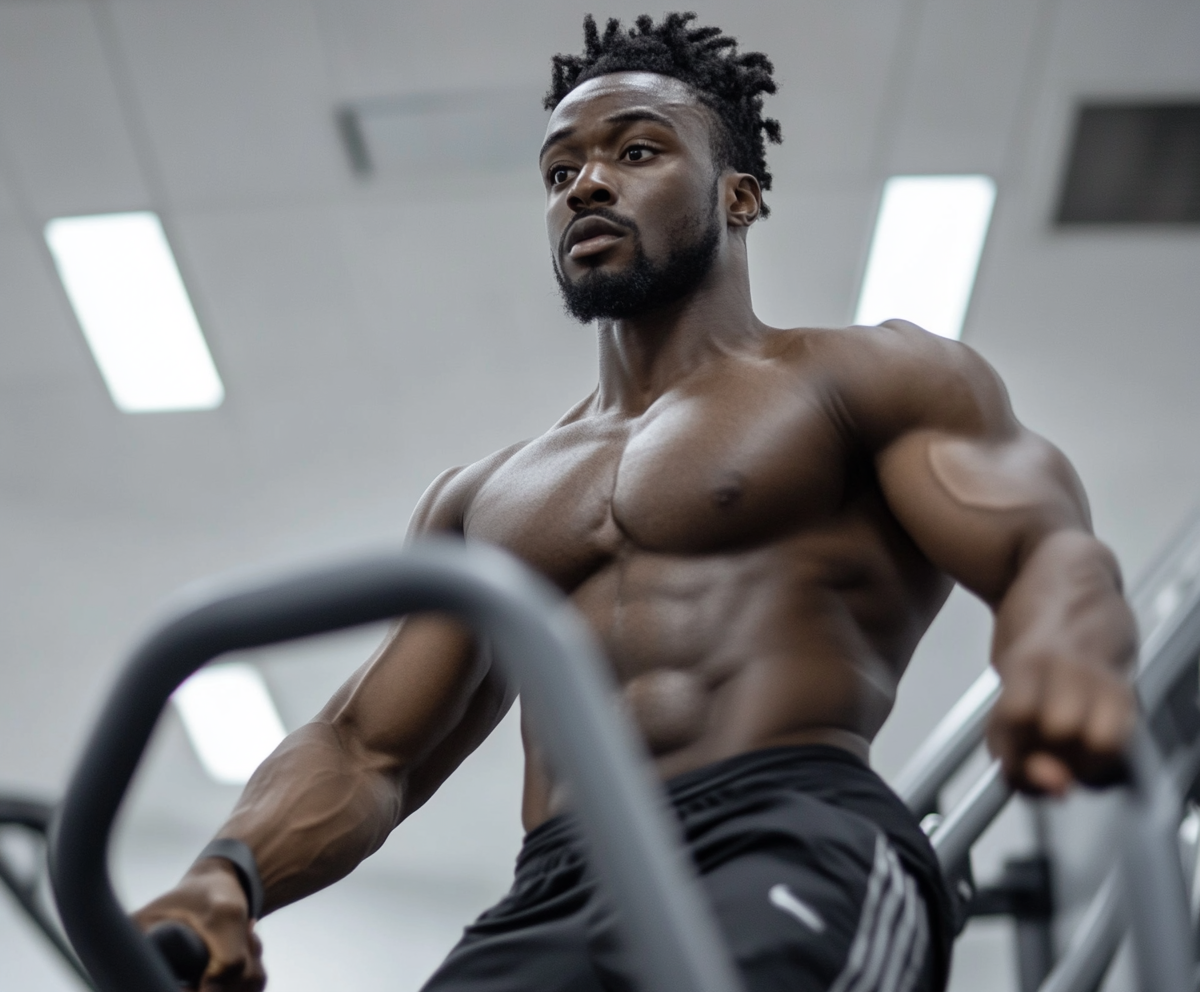Let’s face it. Your relationship with the gym has become predictable. Mindlessly running on the treadmill for 45 minutes. Mechanically lifting weights while scrolling through your phone. And the results? Well, they’re about as exciting as watching paint dry.
What if there was a workout style that could transform your body faster, crush your fitness plateau, and actually make you look forward to exercising? Enter High-Intensity Interval Training – the workout approach that might just be the answer to all your fitness frustrations.
The truth about traditional workouts nobody talks about
We’ve been fed the same tired advice for decades. Cardio for fat loss. Weights for muscle. Pick your goal and stick to your lane. But your body doesn’t work in such neat categories, and frankly, this outdated approach is wasting your precious time.
Traditional steady-state cardio can actually signal your body to hold onto fat stores while breaking down muscle tissue for energy. Meanwhile, conventional strength training often fails to elevate your metabolism significantly after you leave the gym.
The real kicker? Most people quit before seeing results because these traditional approaches take too long and deliver diminishing returns. No wonder gym memberships collect dust by February.
What makes HIIT the game-changer your body craves
HIIT works on a beautifully simple principle. Push your body to its limit for short bursts, allow brief recovery, then do it again. This creates an “afterburn effect” that keeps your metabolism fired up for up to 48 hours after you’ve showered and moved on with your day.
But the magic goes deeper. HIIT triggers a hormonal environment perfect for building strength while simultaneously torching fat. When you push to maximum effort, your body releases growth hormone and testosterone – the natural muscle-building cocktail you’ve been missing.
The science is clear. A properly designed HIIT session causes microscopic tears in muscle fibers while depleting glycogen stores. During recovery, your body repairs those fibers stronger than before while preferentially burning fat for energy.
The surprising muscle benefits of going all-out
Forget the myth that HIIT is just glorified cardio. When structured properly with resistance exercises, it builds impressive strength through something called metabolic resistance training.
Think about how your muscles respond when forced to generate maximum power repeatedly. They adapt by becoming both stronger and more efficient. This is why sprinters develop powerful, muscular physiques despite never touching a traditional weight routine.
Unlike conventional lifting where rest periods dilute intensity, HIIT maintains continuous tension on muscles while simultaneously challenging your cardiovascular system. The result is dense, functional strength built in conjunction with improved endurance.
This hybrid approach is particularly effective for developing explosive power in fast-twitch muscle fibers, which have the greatest potential for growth but are largely untapped in conventional training programs.
Why your body fat doesn’t stand a chance
HIIT creates the perfect metabolic storm for fat annihilation. First, the high-intensity work itself burns significant calories. But the real magic happens afterward, through excess post-exercise oxygen consumption.
After an intense HIIT session, your body must work overtime to restore oxygen levels, replenish energy stores, repair muscle, and clear lactate. This recovery process requires serious energy, meaning your body continues burning calories at an elevated rate long after you’ve left the gym.
Beyond the calorie burn, HIIT improves insulin sensitivity, allowing your body to better manage blood glucose and store less fat. It also triggers the release of adiponectin and other compounds that signal your body to release stored fat for fuel.
Even more impressive, research shows HIIT specifically targets stubborn abdominal fat, the kind linked to health problems and the hardest to lose with conventional approaches.
How to design your perfect HIIT session
Start with a proper warm-up that mimics the movements you’ll perform but at lower intensity. Your muscles should feel warm and your heart rate elevated before diving into the work intervals.
Choose compound exercises that engage multiple muscle groups simultaneously. Think burpees, kettlebell swings, squat presses, rowing, and battle ropes. These movements recruit more muscle fibers and elevate your heart rate faster than isolation exercises.
Work periods should last between 20-40 seconds at maximum sustainable effort. Rest periods typically range from 10-60 seconds depending on your fitness level and goals. Less rest means more cardiovascular challenge, while more rest allows greater power output during work intervals.
A complete HIIT workout need only last 15-25 minutes, not including warm-up and cool-down. More is not better with HIIT. Quality and intensity matter far more than duration.
Avoiding the mistakes that derail results
The biggest HIIT mistake is not pushing hard enough during work intervals. If you can maintain a conversation, you’re not hitting true high intensity. Each work period should feel unsustainable beyond the prescribed time.
Equally problematic is insufficient recovery between sessions. Because HIIT is so demanding, most people should limit sessions to 2-3 per week with at least 48 hours between workouts targeting the same muscle groups.
Form breakdown during fatigue leads to injury and reduced effectiveness. Choose simpler movements as you tire, rather than compromising technique on complex exercises.
Many beginners also make the error of starting too aggressively. Build gradually, beginning with lower intensity intervals and more rest, then progressively increase intensity while decreasing rest periods as fitness improves.
Customizing HIIT for your specific goals
For maximum strength gains, use heavier loads and slightly longer rest periods. Focus on power-based movements like weighted jumps, medicine ball throws, and Olympic lift variations. Keep work intervals in the 15-30 second range to maintain power output.
If fat loss is your primary goal, incorporate full-body movements that elevate heart rate dramatically. Minimize rest periods to 15-30 seconds and extend work periods to 30-45 seconds. Circuit formats work particularly well here.
For the ideal balance of strength and fat loss, alternate between strength-focused days with heavier loads and metabolic-focused days with lighter loads but higher volume and shorter rest periods.
The mental edge that transforms your fitness journey
Perhaps the most underrated aspect of HIIT is its psychological benefit. Traditional workouts can become mind-numbing time commitments. HIIT demands total focus for brief periods, making it impossible to zone out or get bored.
This mental engagement creates a powerful mind-muscle connection that enhances results. The clearly defined work and rest periods also provide a natural sense of accomplishment with each interval completed.
Many practitioners report that HIIT’s intensity creates a meditative state where everyday stresses temporarily vanish. All that exists is the present moment and the challenge at hand, delivering stress-reduction benefits similar to mindfulness practices.
Making the switch without overwhelming your body
If you’re currently doing traditional workouts, don’t throw everything away overnight. Begin by replacing one or two sessions weekly with HIIT workouts, allowing your body to adapt gradually.
Start with a 1:2 work-to-rest ratio. For example, 20 seconds of work followed by 40 seconds of rest. As your fitness improves, work toward a 1:1 ratio, and eventually a 2:1 ratio for advanced practitioners.
Remember that intensity exists on a continuum. Your version of high intensity will be different from someone else’s. The key is pushing to your personal maximum, not meeting some arbitrary external standard.
Listen to your body throughout this process. Proper HIIT should leave you feeling energized after recovery, not chronically exhausted. If fatigue accumulates, add an extra recovery day or dial back the intensity temporarily.
The bottom line on transforming your fitness approach
The beauty of HIIT lies in its efficiency and effectiveness. By strategically pushing your limits then allowing recovery, you create the optimal environment for building strength and burning fat simultaneously.
In a world where time is increasingly precious, HIIT delivers maximum results with minimum time investment. But beyond the practical benefits, there’s something profoundly satisfying about pushing to your limits and discovering what you’re truly capable of.
Your body is an amazingly adaptive machine. When you challenge it intelligently through HIIT, it responds by becoming stronger, leaner, and more resilient. The question isn’t whether you should incorporate HIIT into your fitness routine, but why you haven’t already.















